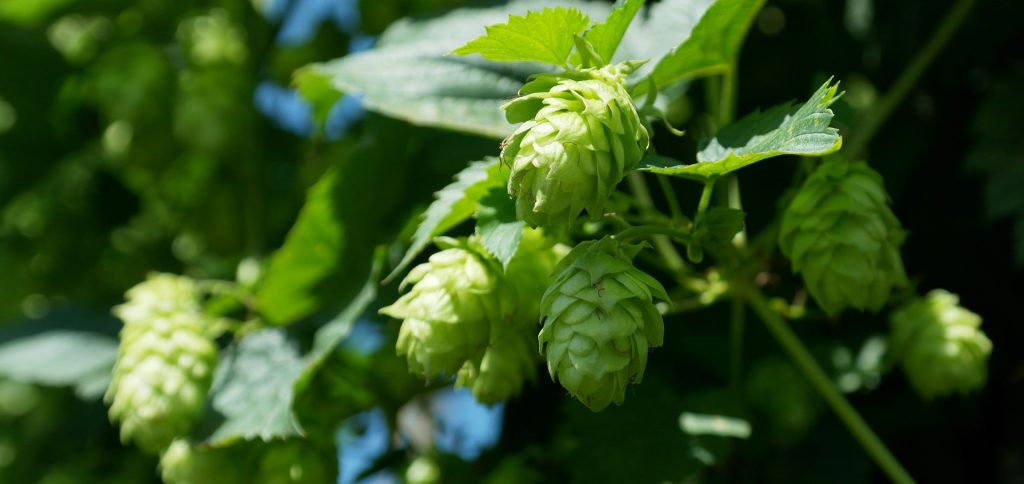Major changes in the hops market – bittering hops vs. aroma hops

In previous years, aroma hops have been a real money spinner for many producers. With increasing demand for bittering hops and a troublesome harvest, the global hops market is currently on the brink of yet another change. European and American hop growers are once again having to plant more high-alpha crops.
Hops growers in the northern hemisphere are currently still harvesting the last tendrils of this year’s yield in order to bag the last umbels of the green gold. However, the global hops market once again needs to adapt to a new situation. On account of the global trend for specialty beers and the related demand for aroma varieties, the hops market gathered unexpected momentum in recent years. Hop-growing areas grew rapidly and brewers began to focus on new varieties. On account of huge demand for aroma hops, many growers even dug up their traditional fields of bittering varieties for the sake of this attractive new business. However, this now seems to be coming back to haunt them.
Stop the press – bittering hops are in demand
To the surprise of many hops growers, global demand for bittering hops is suddenly on the rise again. Many hop growers miscalculated and now have to replant again, by no means solely for seasonal reasons. According to the latest Barth-Haas report, in Germany major aroma varieties, which in some cases have only just recently been planted, are registering huge losses compared to 2017; those include Hüll Melon (-10.8%), Mandarina Bavaria (-9.8%) and Hallertauer Mittelfrüh (-4.9%). As such, bittering varieties are on the up, such as Polaris by just under 30% and Herkules by 8.8%. “The market for bittering varieties is still narrow, though,” says Barth-Haas Sales Director Thomas Raiser. However, there still shouldn’t be any shortages.
Hops market experiences growth in the U.S.
In the U.S., the world’s largest hop-growing country, the surface area dedicated to bittering varieties is being increased for the first time since 2011. While in Germany there are around 21,000 hectares of bittering varieties, there are some 14,000 hectares on the other side of the Atlantic. New varieties with high alpha values are currently experiencing huge growth in the United States. The new high-alpha variety Pahto, for example, grew by 73% and CTZ No. 2 by 25% in 2017.
According to initial forecasts, the total overall crop yield in the U.S. is expected to be relatively good this year. Conditions there, such as favorable climate and sufficient water, were almost perfect. Only aroma varieties, such as Cascade and Simcoe, seem to be faltering slightly. Nevertheless, a record amount of 22,400 hectares was grown this year in the U.S. The harvest is expected to result in a yield in excess of 46,000 tons. The aroma variety Citra is the market leader, registering an increase of 30% compared to last year. As the harvest lasts until the end of September in the U.S., such figures are only estimates.
European hop-growing regions are struggling
By contrast, European hop-growing regions in particular are experiencing problems this harvest year. According to the latest figures, alpha contents are considerably below average due to drought and hot temperatures. In Germany, the outlook was still rather good up until mid-July; from there on out, during the months up until the start of the harvest, temperatures were too high and rainfall was too scarce. The umbels also didn’t develop as well as they otherwise could have and were below average on account of the drought. Total production is expected to be around 3,000 tons below normal.
In the Czech Republic, Europe’s second largest hop-growing country, the drought had even worse effects on stocks. This year’s yield is 40% below average. Hop experts estimate that only 4,200 tons will be achieved instead of the usual target of 6,600 tons. The global alpha balance sheet therefore looks negative again and is leading to shortfalls in some areas. However, this is predominantly a consequence of the hot summer. With normal yields, however, demand could be met here – without additional planting.
There are now dozens of hop-growing regions around the world, whereby the U.S. still accounts for more than 40% and Germany more than 35% of global production. However, the pre-contractual quotas are in part so high that there will hardly be any hops sold on the spot market in the future, in particular in Europe. Forward thinkers in the hops industry are therefore predicting that supplies of some varieties could be even tighter in the future.
